Table of Contents
Arsenide minerals are compounds of the metals with arsenic. The list of nearly all these minerals have a metallic luster, i.e., the peculiar shining appearance of metals.
Smaltite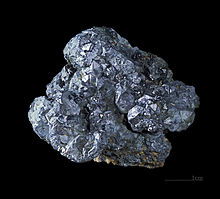
CoAs2. — Color, tin-white to steel- gray; the white color is seen in the larger crystals, but since smaltite is usually massive (i. e., in a mass not showing distinct crystals), the steel-gray color is most common; powder, grayish black; luster, metallic; H = 5.5 to 6; G = 6.4 to 6.6. Nickel is usually present, taking the place of a part of the cobalt.
Chloanthite
NiAs2, is very much like smaltite, and, in composition, a specimen may be anywhere between the two. Cobaltite, CoAsS, gerdorffite, NiAsS, are very like smaltite. 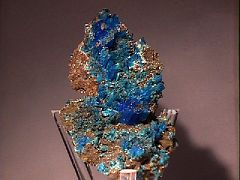 All crystallize in the cubic system, and in forms like those of pyrite, but differing in having good cleavage. When the cobalt minerals weather, they form erythrite or cobalt bloom, (Co3As2O8 with water), a crimson or peach- red mineral, usually earthy, but sometimes in crystals of glassy or adamantine luster. The corresponding nickel mineral, annabergite, (Ni3As2O8, with water), is green. It sometimes happens that the mineral has nickel and cobalt in such proportions that, when weathering takes place, one color kills the other, giving a gray or white product. Small quantities of smaltite and cobalt bloom are rather widely distributed, particularly, in connection with diabase and other basic rocks. Workable deposits are not numerous.
All crystallize in the cubic system, and in forms like those of pyrite, but differing in having good cleavage. When the cobalt minerals weather, they form erythrite or cobalt bloom, (Co3As2O8 with water), a crimson or peach- red mineral, usually earthy, but sometimes in crystals of glassy or adamantine luster. The corresponding nickel mineral, annabergite, (Ni3As2O8, with water), is green. It sometimes happens that the mineral has nickel and cobalt in such proportions that, when weathering takes place, one color kills the other, giving a gray or white product. Small quantities of smaltite and cobalt bloom are rather widely distributed, particularly, in connection with diabase and other basic rocks. Workable deposits are not numerous.
Cobalt, nickel, and arsenic are extracted from these ores. Cobalt sells at about $2.40 per pound, and the black oxide of cobalt at $2.00 per pound. The metal is used principally to make stellite alloys, which are very hard, stainless heat-resistant alloys of cobalt and chromium, with sometimes other metals (See Chromite, Art. 65.) Cobalt oxide is used for making smalt blue, a color much in demand in the manufacture of porcelain ware and stained glass. Nickel sells at 60 to 65 cents a pound; it is used to give hardness and toughness to steel, for nickel plating, etc. The arsenic comes into commerce as white arsenic, the oxide, which sells at 3 to 7 cents a pound.
Mispickel or Arsenopyrite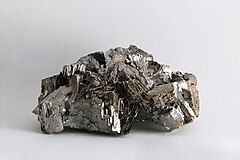
FeAsS. — Color, silver-white to steel-gray, the former showing in the larger crystals. As mispickel quite commonly shows distinct crystallization, the silver-white color is oftener seen than in the case of smaltite. Powder, grayish black; luster, metallic; H = 5.5 to 6; G = 5.9 to 6.2; strikes fire with steel, causing a garlic smell; crystals, in the orthorhombic system, often showing fine grooves; cleavage, fairly good. Mispickel is composed of iron, sulphur, and arsenic; the latter is a gray, brittle element that is usually classed as a metal, the oxide of which, a white powder, is usually called arsenic, and is obtained by roasting mispickel and collecting the fumes. Arsenic (not the white powder) is used to harden lead in the manufacture of lead shot and bullets. Mispickel is found in veins, mostly mixed with quartz, and is often gold-bearing, as in eastern Ontario, in the Sudbury district, and near Temagami.
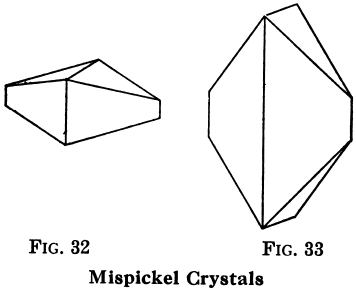
Niccolite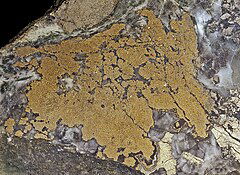
NiAs. — Color, pale copper-red; powder, pale brownish-black; luster, metallic; H = 5 to 5.5; G = 7.33 to 7.67. An ore of nickel and also of arsenic.
Proustite or Light-Red Silver Ore
Ag3AsS3.— Color, scarlet, vermillion; powder, the same; luster, like diamond; H =2 to 2.5; G = 5.57 to 5.64; conchoidal fracture. Contains 65.4% silver.
